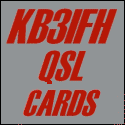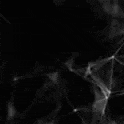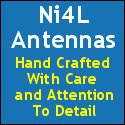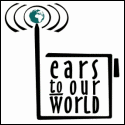 Logbook of the World problems
Logbook of the World problems
Now that I switched shack computers out, I loaded the latest version of Trusted QSL to my shack laptop. I requested a new callsign certificate from that laptop and it arrived today. I tried uploading the certificate to the Trusted QSL program and I keep getting this error:
The certificate is there - the League just e-mailed it to me! I even went to the LotW Website and manually downloaded my certificates - still nothing, same message box pops up. I even tried deleting Trusted QSL and re-installed it thinking there might have been some kind of error when it loaded - no dice.
Any LotW gurus out there have any idea as to what might be going on?
72 de Larry W2LJ
QRP - When you care to send the very least!
Larry Makoski, W2LJ, is a regular contributor to AmateurRadio.com and writes from New Jersey, USA. Contact him at [email protected].
 ISS SSTV reception in Thunder Bay, ON EN58hh
ISS SSTV reception in Thunder Bay, ON EN58hh
Been a long while since I played with satellites or even the ISS for that matter. In fact 2 meters has taken a total backseat for me as it no longer thrills me as far as APRS or even repeaters. IRLP nodes as well just don’t do it like they used to, combine that with only one telephone provider (Thunder Bay Telephone) and major dropouts etc on the IRLP it makes it no fun on nodes.
So turned the FT857 on today after reading about the ISS sending SSTV pictures down to earth. Using a dual band vertical at 25′ and using MMSSTV I was able to copy these pictures this afternoon. (Monday afternoon in Ontario)


 So kinda made my day to see the pictures up on the screen when I got back into the shack.
So kinda made my day to see the pictures up on the screen when I got back into the shack.
Cheers
Fred
VE3FAL
Fred Lesnick, VE3FAL, is a regular contributor to AmateurRadio.com and writes from Thunder Bay Ontario, Canada. Contact him at [email protected].
 CLE191 Results
CLE191 Results
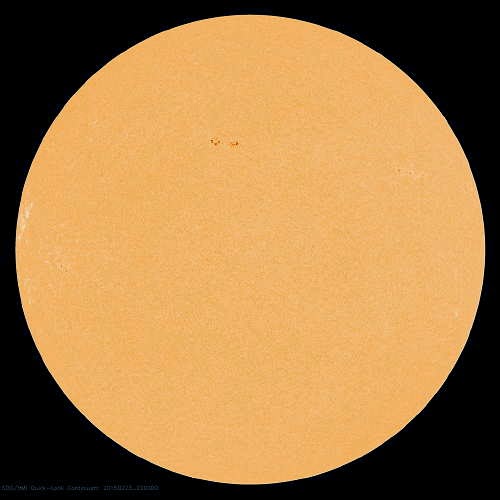 |
| http://helios.gsfc.nasa.gov/chole.html |
With my Perseus SDR taking 2-minute spectrum captures once per hour, from dusk through dawn, the short propagation lifts become quickly evident ... the majority of my loggings were made during these short windows of propagation:
21 04:00 260 ZXS Prince George, BC, CAN
21 02:00 260 YSQ Atlin, BC, CAN
22 07:00 260 AVZ Terrell, TX, USA
21 02:00 260 AP Sedalia, CO, USA
21 13:00 261 D6 Fairmont Hot Springs Apt, BC, CAN
22 09:00 263 ZQT Thunder Bay, ON, CAN
21 09:00 263 YGK Kingston, ON, CAN
21 09:00 263 YBB Kugaaruk, NU, CAN
21 13:00 263 JDN Jordan, MT, USA
21 08:00 263 3Z Russell Apt, MB, CAN
21 08:00 264 ZPB Sachigo Lake, ON, CAN
21 08:00 266 XD Edmonton, AB, CAN
21 02:00 266 VR Vancouver, BC, CAN
21 08:00 266 SL Turner, OR, USA
21 08:00 266 SAA Saratoga, WY, USA
21 08:00 266 ICK Annette Island, ALS
21 08:00 266 BZ Bozeman, MT, USA
21 13:00 268 ZWL Wollaston Lake, SK, CAN
21 08:00 269 ZW Teslin, YT, CAN
21 04:00 269 YK Castlegar, BC, CAN
21 08:00 269 UDE Delta Beach, MB, CAN
22 09:00 269 SWT Seward, NE, USA
22 09:00 269 PK Park Rapids, MN, USA
22 09:00 269 ISB Sibley Municipal Apt, IA, USA
21 08:00 269 CII Choteau Apt, MT, USA
23 08:00 510 OF Madison, NE, USA
21 10:00 512 HMY Lexington, OK, USA
21 10:00 515 SAK Kalispell, MT, USA
23 08:00 515 PN Ponca City, OK, USA
23 08:00 515 OS Columbus, OH, USA
21 10:00 515 CL Cresent Beach, WA, USA
22 09:00 516 YWA Petawawa, ON, CAN
23 08:00 521 TO Topeka, KS, USA
22 08:00 521 ORC Orange City, IA, USA
21 10:00 521 INE Missoula, MT, USA
23 08:00 524 HRD Hawthorne, TX, USA
21 09:00 525 ICW Nenana, ALS
21 09:00 529 SQM Big Level Isl, ALS
21 08:00 1725 WH2XDE/3 MA
21 08:00 472.4 VE7CNF BC
21 06:00 474 VE7BDQ BC
21 08:00 475.5 WG2XSV WA
In just a few years the Sun should be very very quiet for several winters, offering some superb LF listening once again.
Steve McDonald, VE7SL, is a regular contributor to AmateurRadio.com and writes from British Columbia, Canada. Contact him at [email protected].
 WAS most wanted?
WAS most wanted?
This weekend I finally snagged Nevada. Not one of the smallest states in the US, but certainly one that has been elusive to me since getting back into HF in 2013. I had worked a ham in Nevada earlier last year, but my multiple requests for LoTW or a paper card fell into the noise. But this weekend I worked a Nevada station that promised a paper card straight away.
This got me to thinking…with the magic list of DXCC most wanted, is there a WAS most wanted list? I worked every state and received quick confirmations in short order except for Delaware and Nevada. And watching the psk streams go by, I sure see a lot of people asking for NV, and DE. Of course, it depends on where you’re located.
Michael Brown, KG9DW, is a regular contributor to AmateurRadio.com and writes from Illinois, USA. Contact him at [email protected].
 More SSTV from the ISS
More SSTV from the ISS
The SSTV activity had been due to last three days starting on Saturday but commencement was delayed by the NASA space walk.
Receiving the signal and decoding is relatively straightforward due to relatively high power used (around 25W) however getting a perfect image is a challenge and dependant on a number of factors.
- The timing of the overhead pass. Due to the time taken to transmit the image and the three minute delay between each image it is possible to only be in reception range for the end of one image and the start of the next.
- The ISS is moving quickly and so the transmission suffers noticeable Doppler shift. FM is more immune to the effect but for optimal performance adjustment of the tuned frequency is required especially on high elevation passes (more information).
- The ISS moves position, both in direction and elevation as it moves across the sky and will show up the peaks and troughs in a static antennas radiation pattern. This leads to bands of noise when the signal level falls. The use of a rotatable (and if possible tiltable) antenna (or even an handheld one) is the dirigour mode of operating satellites (and the ISS) for serious enthusiasts.
- Noise and local interference will also obviously affect the image.
 |
| Mission Control |
I opted a two pronged approach, the Yaesu FT857D connected to my rotatable four element YAGI which is mounted horizontally for SSB and the old TRIO/KENWOOD TR9000 was connected to the X50 dual-band collinear mounted vertically.
I had two copies of the MMSSTV program running on separate laptops The TR9000 was left running largely unattended tuned to 145.800MHz, while the FT857D was tweaked to the optimum frequency while the YAGI antenna was rotated to the correct azimuth during the pass.
All adjustments were done manually and I use the Orbitron program for prediction and under the Rotor/Radio tab the frequency and azimuth are shown and updated during the pass (as can be seen in the screen show below)
I missed the first low elevation at 11:07UTC, but was able to monitor and decode images on all the remaining passes during the day, with some excellent results, the images show the full images decodes on both radio set ups as a comparison.
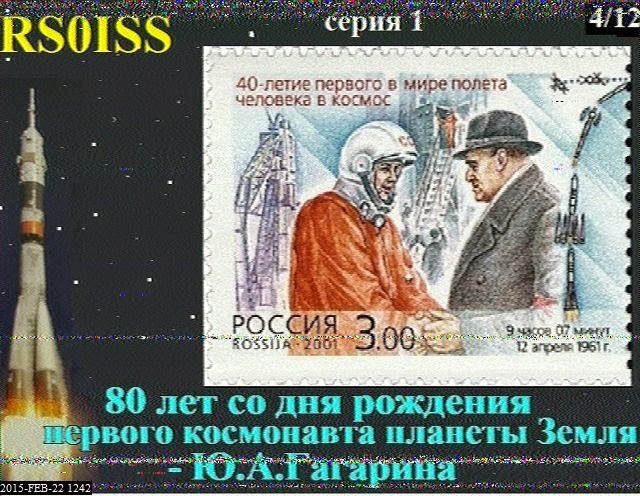 |
| FT857D - Yagi |
 |
| TR9000 - Collinear |
 |
| FT857D - Yagi |
 |
| TR9000 - Collinear |
 |
| FT857D - Yagi |
 |
| TR9000 - Collinear |
 |
| FT857D - Yagi |
 |
| TR9000 - Collinear |
 |
| FT857D - Yagi |
 |
| TR9000 - Collinear |
I was especially pleased when one of my best images was featured on the Amsat-UK and the Southgate Amateur Radio News websites.
What was slightly worrying and it also happened during the last SSTV activities were some operators transmitting on the downlink frequency even during a pass, what sounded like someone keying up was responsible for the single noise line on another perfect image. I even received an unexpected SSTV image, complete with a call sign while the system was waiting for the next pass. I won't publish it here as everyone makes mistakes.
The experiments are continuing today but I am in work so will just leave an automated set up running on the collinear.
Judging by the messages on social media these SSTV activities seem to have captured the imagination of a lot of operators and several members of my local club South Kesteven Amateur Radio Society (SKARS) had their first go with some excellent results and are hooked! The images can seen on the SKARS Facebook page
Long may the activities continue, hopefully started to transmit some live images from space.
Andrew Garratt, MØNRD, is a regular contributor to AmateurRadio.com and writes from East Midlands, England. Contact him at [email protected].
 ARRL CW Contest done QRP style
ARRL CW Contest done QRP style
| Oliver is asking……"Ahhhh dinner!!! |
| The rig setup |
Score rundown is as follows
Contacts DXCC's Points
81 39 9360
The equipment used was the Elecraft K3 with 500,400 and 250 inrad filters, the Elecraft P3, Begali Contour Key and the Flex control external VFO knob and last but not least the MFJ 1788 Magnetic loop antenna. The software used were N1MM+ contest software, N4PY rig control software and MRP40 CW code reader for the chain saw speed code. I never had Murphy pay me any visits during
| The contest software |
Mike Weir, VE9KK, is a regular contributor to AmateurRadio.com and writes from New Brunswick, Canada. Contact him at [email protected].
 Pixie (40m) progress
Pixie (40m) progress
 |
| 40m Pixie kit |
 |
| Pixie kit – being built |
After carefully unpacking this kit today I checked all the parts were there and measured all values for correctness. The kit was very well packed and everything was there. Even at the price I paid ($10 with shipping by air included) it represents very good value.
The kit comes with a nice silk screened and well labelled PCB, crystal, all parts, schematic and a parts list. It would be hard to buy the bits for the price I paid. G1KQH paid even less!
I now realise that for close-up work I need better glasses! Fortunately I have a small assembly aid that includes a magnifying glass. I am taking the build slowly and it is quite exhausting for me. However, the actual assembly is going well. Last year, for me, this would have been impossible. I can still solder – big steps, HI.
Although the Pixie will be tested on the air, the important personal test is the building. It proves that, with some effort on my part, the world of experimental amateur radio is still there for me. You have no idea what this small step means to me.
Before too long I want to get out in the countryside and try again with my VLF and optical tests. It has been a long long long time.
Roger Lapthorn, G3XBM, is a regular contributor to AmateurRadio.com and writes from Cambridge, England.






